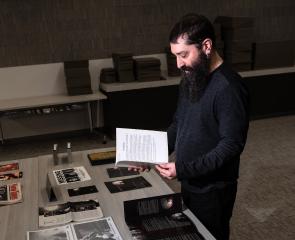Innovation and Research
A new Pitt center will weave history and place to build a comprehensive global atlas
The Institute of Spatial History Innovation will house an interactive database that offers historical context on more than 2 million locations worldwide.
3 Pitt faculty have been named Fulbright scholars
Guillermo Calero Velazquez, Jennifer Brick Murtazashvili and Aleksandar Stevanovic will conduct research abroad through the Department of State program.
2 grants will advance Pitt life sciences and cyber training opportunities
The awards from the Richard King Mellon foundation aim to meet growing industry workforce needs in emerging areas.
Pitt’s life sciences prowess was on display during PA Gov. Josh Shapiro’s recent Pittsburgh visit
Researchers at the heart of Pittsburgh’s transformation into a health and tech powerhouse presented their work to industry officials, community advocates and elected officials at The Assembly.




